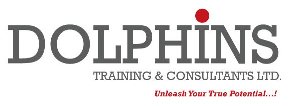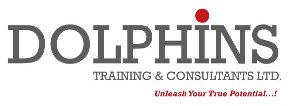
Could it be that our lives and careers are simply a reflection of our Words?
►Is the difference between a millionaire and a billionaire the words they know and use?
►Could the difference between a happy person and depressed person simply be the words they chanted to themselves?
.jpg)
At the core of any effective training program is correctly identifying what or who needs to be trained. Poorly conducted needs analyses can lead to training solutions that train:
• The wrong competencies;
• The wrong people; and
• The wrong learning methods.
The results of a training needs analysis provides the employer with answers to the following questions:
• What is needed and why?
• Where is it needed?
• Who needs it?
• How will it be provided?
• How much will it cost? and
• What will be the business effect?
Employers can conduct a needs analysis by following the steps below.
Step 1: Determine the Desired Business Outcomes
Before a training needs analysis can begin, the employer needs to articulate the goal of the training. That is, what are the expected business outcomes of the training?
The training goal should correspond to a business objective. This can be specific to an individual employee, work unit, department or the entire organization.
The ultimate goal of the training should be clearly articulated and kept in the forefront to ensure that the entire needs analysis process keeps the desired outcomes in sight. It is best for an employer to answer the question: "How will we know that the training worked?"
Examples of ultimate goals are:
• Improve customer service representatives' customer satisfaction ratings;
• Increase the close rates on business proposals or bids by sales personnel;
• Improve employee morale through better supervision by middle management; and
• Improve the speed at which warehouse employees fill orders.
Step 2: Link Desired Business Outcomes With Employee Behavior
There are generally multiple behaviors that are associated with any desired business outcome. These behaviors are a result of employees:
• Knowing what to do;
• Having the capability to do it; and
• Having the motivation to do it.
At this step in the process, employers should identify the desired critical competencies, i.e., behaviors and associated knowledge, skills, abilities and personal characteristics that are linked to desired business outcomes. This is usually done through collecting information from subject matter experts.
Data collection may take the form of interviews, focus groups or surveys. Regardless of the method used, the data should result in a clear understanding of how important each competency is to achieving the desired business goal.
A rating scale example to assess the importance is one like the following:
How Important Is This for Successful Job Performance?
1 = Not at all
2 = A little
3 = Somewhat
4 = Considerable
5 = Extremely
To ensure that only the competencies that are deemed critical should be considered for inclusion in other training needs analysis steps, rating averages should be at least a 4.0 on the five-point rating scale.
Step 3: Identify Trainable Competencies
Not every competency can be improved through training. For example, a sales job may require sales people to be outgoing and initiate conversations with total strangers. It is more effective, then, for an employer to hire people that are already extroverts than to attempt to train introverts to be more outgoing. Similarly, it may be more effective to hire people with specialized knowledge than to educate and train them.
Employers should evaluate each critical competency from Step 2 and determine if each one is something they expect employees to possess prior to job entry. Taken together, this should provide employers with a list of critical competencies that are amenable to training.
Step 4: Evaluate Competencies
With a targeted list of competencies in hand, employers should determine the extent to which their employees possess these. The most often used methods are:
• Competency evaluations; and
• Tests or assessments.
Performance evaluation surveys are best used to evaluate observable behaviors. This can be easily accomplished by taking the critical competencies from Steps 2 and 3 and having knowledgeable people rate the targeted employees' behaviors. Most often, supervisors perform this function.
However, multiple raters, including peers, subordinates and customers, are often used to evaluate the performance of supervisors and executives. This approach is generally known as 360 degree surveys.
Performance evaluation surveys become less effective the more raters have to infer unobservable competencies such as ability, skills and personality. Evaluation of these competencies is better accomplished through the use of professional tests and assessments. There are many tests available on the market to measure specific skills, abilities and personality characteristics. However, choosing the right test should be done in coordination with a testing professional, e.g., an organizational psychologist. Care should be taken in selecting tests that are valid measures of the targeted competency.
Custom-designed assessments are also appropriate, especially if the employer desires to measure specialized knowledge or effectiveness in a major segment of the work. These can range from multiple choice job knowledge tests to elaborate job simulations. For example, a very effective approach to measuring the training needs of supervisors and leaders is using an assessment center, which is comprised of different role-play exercises that parallel managerial situations.
Step 5: Determine Performance Gaps
Regardless of the methods used to evaluate competencies, individual employee results are then combined to assess how many employees are in need of improvement in particular competencies.
To do this, the employer first needs to establish what constitutes a performance gap. That standard will vary from employer to employer. Some employers will set higher standards than others.
Setting that standard will provide the employer with an understanding of how many employees fall above or below that standard. Those falling below would be considered to be in need of training.
Step 6: Prioritize Training Needs
Employers should aggregate the data in Step 6 with information on the performance gap pervasiveness. That is, employers should total how many, or what percentage, of the targeted workforce needs the training.
Employers should also consider the importance of the competency (see Step 2). Taken together, pervasiveness and importance should result in a list of training priorities.
Step 7: Determine How to Train
Using the training priority list from Step 6, employers should now consider how best to train their workforce. Typical training methods include:
• On the job training (OJT);
• Mentoring and coaching;
• Classroom;
• Web-based;
• Books;
• Conferences; and
• University programs.
It is recommended that employers consult a professional who is well versed in adult learning to help determine the best ways employees can acquire a particular competency.
Some learning methods will work better than others. Although no two people learn or retain information in the same way, studies show that individuals retain information much better if they actually perform the skill or task. This type of retention is about 75 percent.
Compare that to listening to a lecture, where retention is only five percent.
Other forms of learning retention are as follows:
• Reading, 10 percent;
• Audio-visual, 20 percent;
• Demonstration, 30 percent; and
• Discussion group, 50 percent.
Employers should keep this in mind and strive for the training method that will not only be suitable for the material, but also have the best chance for retention by employees.
Step 8: Conduct a Cost Benefit Analysis
At this point, employers need to consider the costs associated with a particular training method and the extent to which performance gaps can be combined into the same training experience.
Cost factors include:
• Required training time;
• Training content development if designed in-house;
• Training evaluation and acquisition if purchased from vendor;
• Training content delivery;
• Lost productivity from time spent in training; and
• Travel and logistical expenses.
On the benefit side, different training methods will have varying degrees of effectiveness (see Step 7). For example, while web-based training may be the least costly, this may not be the best way for employees to develop a particular skill. Employers need to strike a balance between the cost of a particular training method and its ability to achieve the desired results.
Step 9: Planning for Training Evaluation
The last step in this process is for employers to decide how they will know whether the training worked. Training is only effective if the material is retained and used on the job. This step should include an evaluation component similar to how the needs were assessed in Step 4.
Questions the evaluation process should answer are:
• How much did the training improve the competencies targeted in the training?
• How much did the training improve employees' actual job performance?
• How much did the training improve the meeting of business objectives?
• How much did the training result in a positive return on its investment?
The questions employers want answers to will determine the method and components of the evaluation process
Compiled by,
Bernice Kanini - Client Relations
bernice@dolphinsgroup.co.ke
Dolphins Training & Consultants Ltd
Dolphins Group
.
Venue ; Bamburi Beach Hotel Mombasa Kenya
Date; 25th To 29th August 2025 (Five Days)
.jpg)
Venue ; Bamburi Beach Hotel Mombasa Kenya
Date; 25th To 29th August 2025 (Five Days)


.jpg)
.jpg)
.jpg)
.jpg)

.gif)


.jpg)
.jpg)


.jpg)